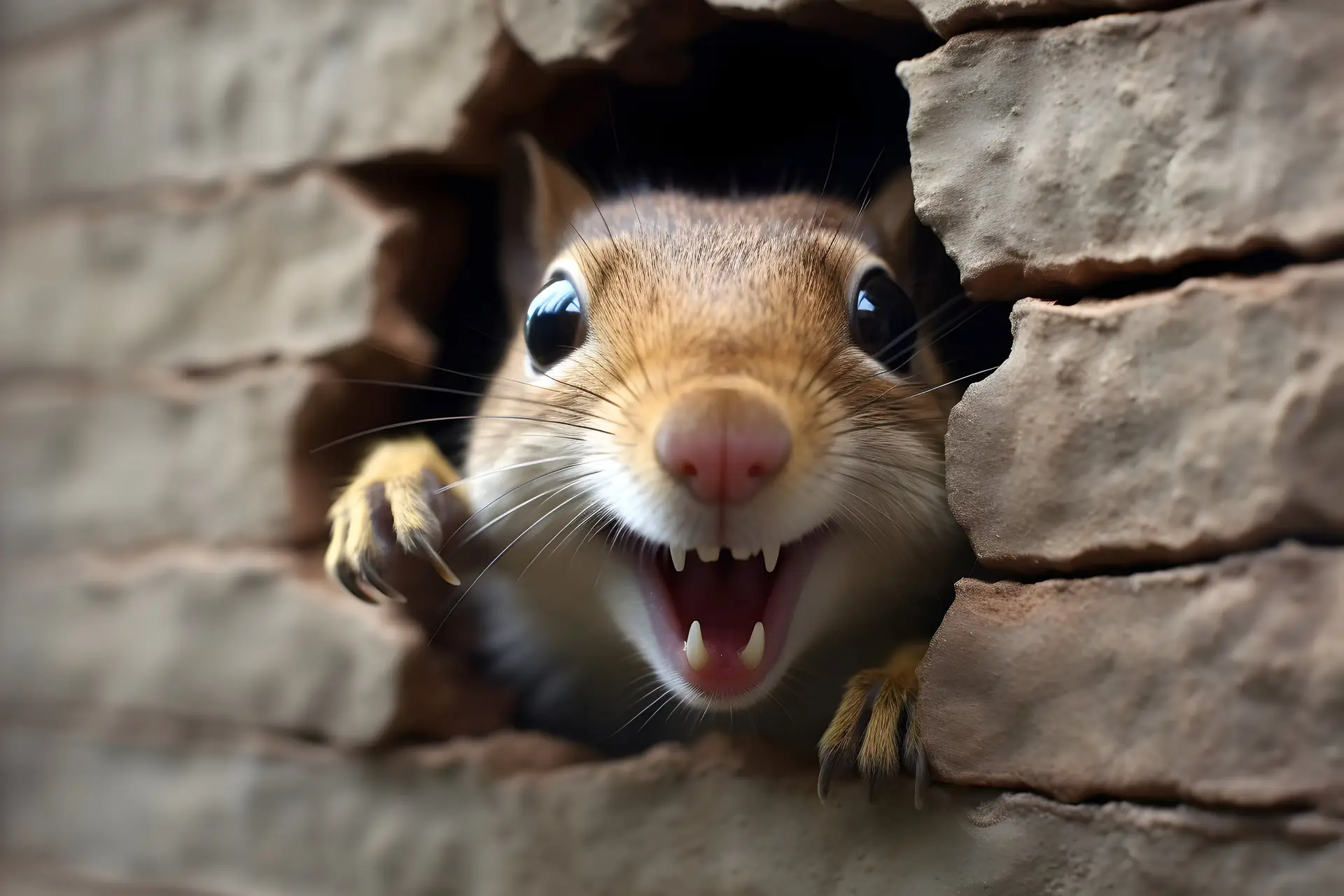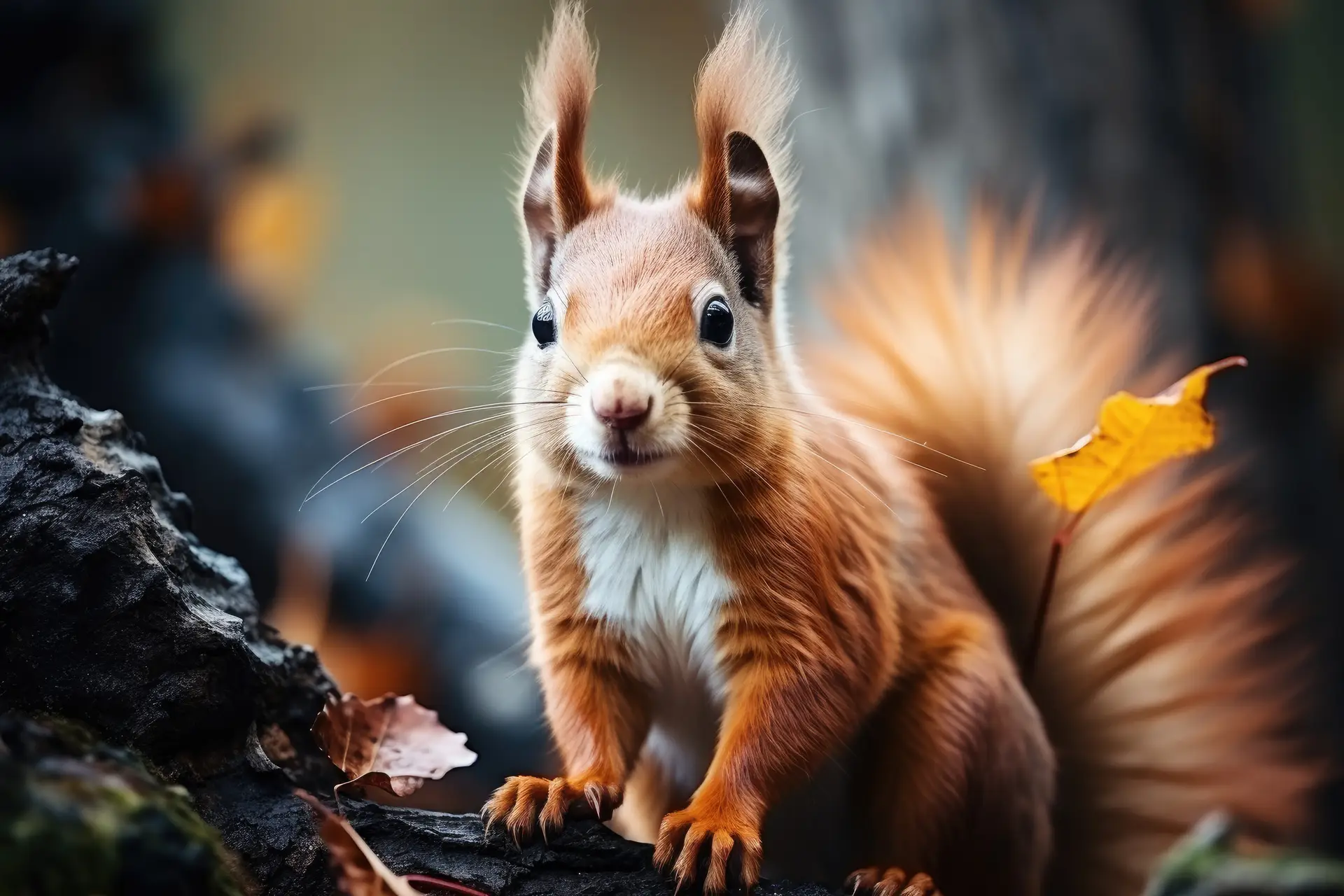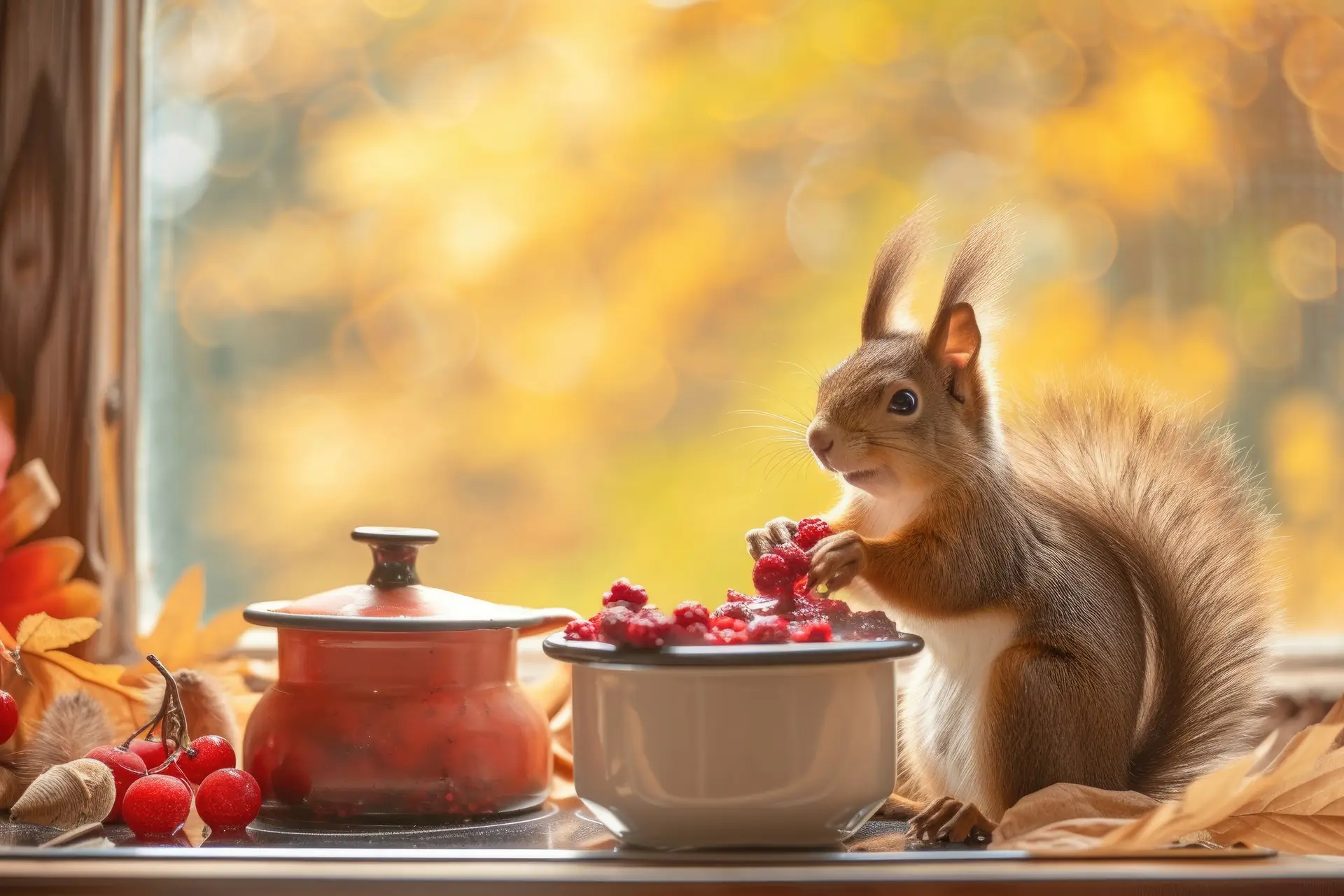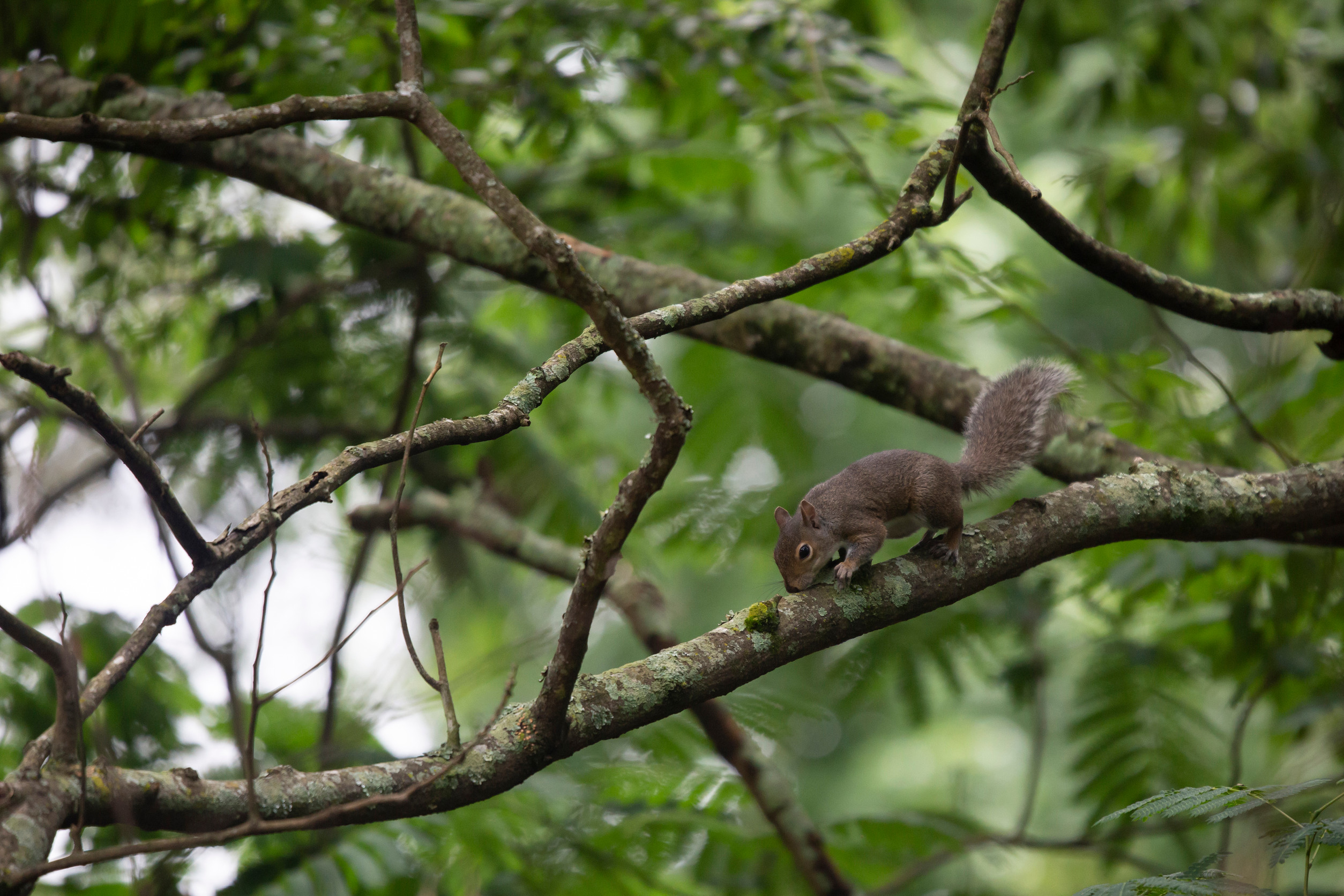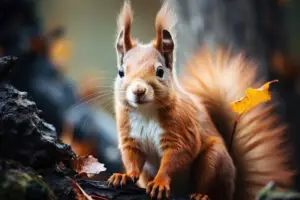Few things are more unsettling than hearing noises coming from inside your walls. That scratching, scurrying, or chattering sound often points to an unwelcome guest. Here in the Pacific Northwest, squirrels are frequent culprits when these noises occur during the daytime. While common in our Vancouver and Portland neighborhoods, squirrels belong outdoors, not navigating the hidden voids of your home. If you suspect squirrels have breached your walls, True Guard Pest & Wildlife understands the urgency and offers expert solutions for this specific, challenging problem.
Are There Squirrels Living in Your Walls? The Telltale Signs
Squirrels nesting within wall cavities leave distinct clues, even though you can’t see them directly. Be attuned to:
- Daytime Disturbances: Unlike nocturnal pests, squirrels are active during the day, especially near dawn and dusk. Listen for scratching, gnawing, rustling sounds (perhaps as they build nests), or quick scurrying footsteps seemingly running within the wall or ceiling spaces. You might even hear their vocalizations – chirps, squeaks, or chatter.
- Mysterious Odors: A persistent, musty smell can develop from squirrel urine and feces accumulating inside the wall void. Dampness from urine can soak into drywall and insulation, potentially leading to mold growth. A particularly foul, strong odor indicates a trapped squirrel may have unfortunately perished within the wall.
- Pet Fixation: Dogs or cats may suddenly become obsessed with a particular section of wall, whining, scratching, or listening intently, sensing the activity within.
- Visible Entry Points: While the squirrels are hidden, their access points might be visible. Look for chewed holes near the roofline, damaged vents, gaps around pipes or utility lines entering the house, or claw marks around potential entryways.
Why Your Walls Became a Squirrel Haven
From a squirrel’s perspective, the space between your walls is prime real estate. It offers:
- Safety and Warmth: Wall voids provide a dark, insulated, and secure shelter, hidden from predators and the elements – a crucial refuge during colder months or our rainy PNW seasons.
- Ideal Nursery: These protected spaces are perfect for squirrels to build nests and raise their young (pups), which typically happens once or twice a year. Discovering squirrels in walls during spring or late summer often means dealing with a mother and her litter.
Squirrels usually find their way into wall cavities via attics, crawl spaces, or gaps in the building’s exterior, squeezing through surprisingly small openings or creating their own.
How Squirrels Get Inside and the Damage They Cause
Squirrels are resourceful and persistent climbers and gnawers. They only need an opening about the size of a quarter to squeeze through, and if a gap isn’t large enough, their powerful teeth can easily enlarge it. Common entry routes include:
- Uncapped chimneys
- Damaged roof vents or soffits
- Gaps where utility lines or pipes enter the house
- Holes along the roofline or siding
Once inside an attic or crawlspace, they can access wall voids. Their constant need to gnaw means immediate danger to your home’s infrastructure within those walls. They readily chew through wooden studs, drywall, plumbing pipes, and most critically, electrical wiring, creating a serious fire hazard. They’ll also shred insulation for nesting material, consisting of leaves, twigs, paper, and sometimes even items scavenged from your attic.
Hidden Dangers: Beyond the Noise and Nuisance
Squirrels in walls pose significant risks beyond structural damage:
- Fire Hazard: Chewed electrical wiring is a leading concern.
- Health Risks: Squirrel feces and urine contaminate the wall void and can harbor bacteria like Salmonella or Leptospira. Parasites like fleas, ticks, or mites carried by squirrels can potentially enter living spaces.
- Odor and Mold: Accumulating waste creates foul odors, and urine saturation can lead to mold growth within the wall, potentially affecting indoor air quality if spores enter ventilation systems.
- Trapped Animals: Occasionally, a squirrel may fall or venture too deep into a wall cavity and become trapped. This leads to frantic scratching and distress calls, followed by decomposition and an intense, lingering odor if the animal perishes.
Why DIY Removal From Walls is Risky & Often Ineffective
Attempting to remove squirrels from walls yourself is generally not recommended:
- Safety Hazards: Cornered squirrels can become aggressive and bite. Direct contact with squirrels or their waste carries disease risks.
- Access Challenges: Pinpointing and safely accessing squirrels within walls without causing significant damage requires expertise.
- Risk of Separation: You might inadvertently seal off babies from their mother, leading to trapped young or a determined mother causing more damage trying to get back in.
- Incomplete Solutions: Simply removing one squirrel doesn’t address the entry points, meaning the problem will likely recur.
True Guard’s Professional Strategy for Squirrels in Walls
Resolving a squirrel infestation within your walls requires a careful, systematic approach. True Guard Pest & Wildlife technicians serving the Vancouver, WA, and Portland, OR areas are equipped to handle this:
- Detailed Assessment: We conduct a thorough inspection to identify exactly how squirrels are getting in, where they are traveling within the walls, and the location of any nests.
- Humane Removal Plan: Based on the situation, we employ targeted, humane methods. This may involve strategic trapping or, in some cases, specialized one-way doors allowing squirrels to exit but not re-enter. If young are present, our priority is their safe removal and potential reunification with the mother, often coordinating with local wildlife rehabilitators per WA/OR guidelines. This may sometimes require carefully creating access points in the wall.
- Crucial Exclusion Work: Identifying and permanently sealing all entry points with durable materials is essential to prevent future invasions. This is the key to a long-term solution.
- Cleanup Recommendations: We advise on necessary cleanup and sanitation procedures for contaminated areas within walls to mitigate health risks and odors.
Don’t Live with the Stress of Squirrels in Your Walls!
Hearing activity inside your home’s structure is disruptive and signals potential danger. For safe, effective, and humane squirrel removal from walls in the Vancouver, WA, and Portland, OR areas, trust the experts. Contact True Guard Pest & Wildlife today for an expert squirrel exterminator and lasting peace of mind.

